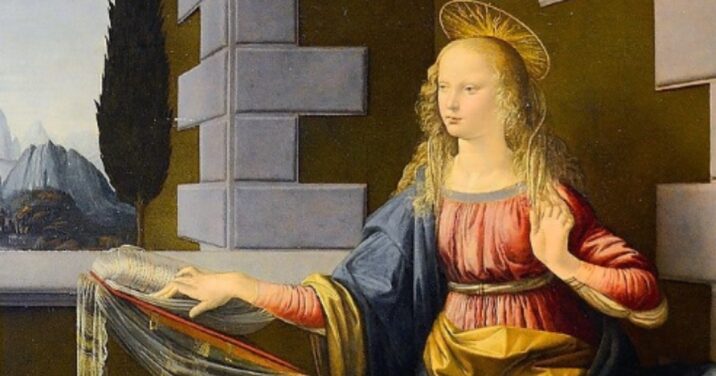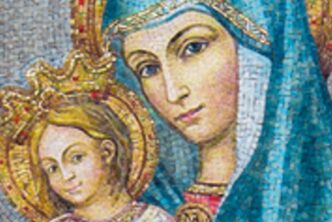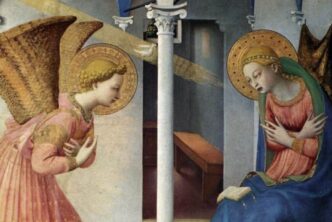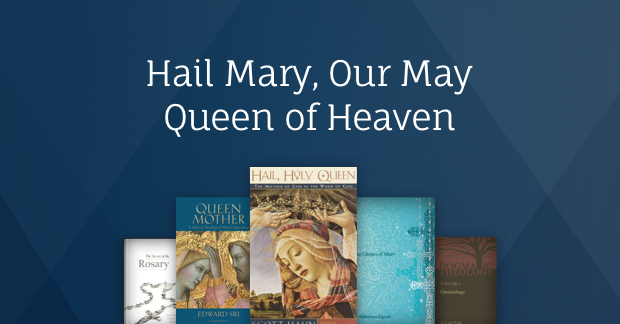Relative to the Virgin Mary’s prominence in Catholic dogma and devotion, “the reader of the gospels is at first surprised to find so little about Mary,” or so says The Catholic Encyclopedia.1
This is admittedly the case. Yet relative to Scripture itself, we may be at first surprised to find Mary is as prominent as she is. Indeed, complaints about the scant data of her life and personality could be applied to most biblical characters, including Christ. A survey of the number of profiles of Christ to come out of the nineteenth-century hunts for the “historical Jesus” would be enough to demonstrate this fact.
Some Protestants would take matters further and declare, as one did recently to me, that Mary is merely “a bit player in the Gospels.” The purpose of this article is to correct two common attitudes toward the Holy Virgin. First, that she is a bit player in the Gospels. Second, that her contribution in the Gospels is limited to the Nativity; that is, to simply bearing and delivering the infant Christ.
Let’s begin with a survey of instances of the Gospels and Acts where Mary is named, referred to, or where her presence can be presumed.
Mary in Acts
Beyond the Gospels, Mary features in the New Testament only twice. The first is anonymously by St. Paul in his epistle to the Galatians when he preaches that Jesus was “born of woman” (Gal 4:4). Since this letter was likely written in AD 57, it is the oldest New Testament text and therefore the earliest source for Mary. Though she is not named, her appearance in this passage has additional significance, as many scholars believe it is the earliest known kerygmatic formula of the Church: “But when the time had fully come, God sent forth his Son, born of woman, born under the law, to redeem those who were under the law, so that we might receive adoption as sons” (Acts 4:4–5). Mary, the “woman,” thus features in the earliest, pre-New Testament apostolic preaching.
Mary again appears only once in the book of Acts, where she is gathered with the apostles and other disciples to pray shortly after the Ascension of Christ (Acts 1:14). This reference to Mary—mentioned in the company of the other women—has led many exegetes to conclude that when it says “they were all together in one place” (Acts 2:1) on Pentecost in the following chapter, Mary is presumably included in “all” and therefore was also present to receive the outpouring of the Holy Spirit and all the gifts this entailed.
This raises a question: How often when the women who attended Jesus during his ministry are mentioned can we assume Mary is in their company, even if she is not named? It is impossible to know, but when mention is made of the group of women who accompanied Jesus (e.g., Luke 23:49), it is at least plausible to assume Mary is among their number. Maximus the Confessor, writing in the sixth century, endorsed what we might call a maximalist approach (no pun intended). For Maximus, wherever Mary could be, she was. For example, Maximus assumed that Mary was present when Jesus healed Peter’s mother-in-law (Matt 8:14–15), on account that “the women who had become disciples of the Lord” were said to be present.2
In his Life of the Virgin, the earliest complete biography of Mary, Maximus suggests Mary was absent only from Jesus’s baptism and his temptation in the wilderness, but beginning with the Wedding at Cana, “his mother was always with him, observing the great beauty of his miracles and listening to his teaching.”3
Maximus portrays Mary as Christ’s premier disciple. For this reason, Maximus takes it as a given that Mary was among the primary “eyewitnesses and ministers of the word” (Luke 1:2) to whom Luke turned when undertaking to write his Gospel account: “She saw everything and heard [her son’s] words. Because of this, the majority of the words spoken at that time and the things that happened before the Crucifixion and after, these the beloved and most blessed one told to the Evangelists and the other disciples.”4
In Maximus, as for many exegetes after him, Mary was seen as an active gospel player, and it was commonplace to assume that she was present at many notable events and miracles mentioned in the Gospels, though the writer may not mention her.
Mary in Mark
Where Mary receives the largest treatment is within the narratives of Christ’s birth and lineage. For this reason, she is given only two passing mentions in Mark’s Gospel—of the four Gospels, the earliest (c. AD 65–80). The first reference, spoken by the audience astonished (and offended) by Jesus’s earliest teachings, affirms the (maternal) parentage of Christ: “Is not this the carpenter, the son of Mary and brother of James and Joses and Judas and Simon, and are not his sisters here with us?” (Mark 6:3).
The second reference, again spoken by a crowd, informs Jesus his mother and brother are waiting for him. In a manner reminiscent of the boy Jesus’s words to his parents when he visited the scholars in the temple as recorded in Luke’s Gospel, the adult Jesus looks at those assembled and responds: “Here are my mother and my brothers! Whoever does the will of God is my brother, and sister, and mother” (Mark 3:34–35). While the Markan portrait of Mary is more definite than in Paul’s writings, she is nonetheless an absent character never seen in the same room as Jesus. Her only connection with her son from the perspective of the reader is through nameless crowds.
Mary in Luke and Matthew
The Gospels of Luke and Matthew (c. AD 80–100) contain the stories of Mary in which she is central, such as the Annunciation, the Visitation, the Nativity, and the Presentation of Christ in the Temple. These stories will be familiar enough to readers not to warrant summary, but I wish to draw attention to the Nativity and boyhood narratives, as these should strike us as odd stories to include in a Gospel account.
In the Gospels and Acts, “the beginning” of Christ’s ministry is his baptism. When Scripture speaks of those who were with Christ “since the beginning,” this did not refer to those who knew him as a child, but to those who knew him since his baptism by John. In the first chapter of Acts, when the apostles were seeking a replacement for the traitor Judas, it was cited as a necessary qualification to fill a seat among the twelve that the candidate had followed Christ as far back as this point (Acts 1:21–22). Thus the ministry of John is the “beginning” of Christ’s ministry, the gospel. Even Luke, the only Gospel after Matthew to include the Nativity and boyhood narratives, like the others introduces John before it introduces Christ.
So why go to the Nativity, the beginning before “the beginning”? The most obvious reason is to establish Jesus was of the line of David through his earthly father, Joseph. Yet for the purposes of this article, it shows us Mary has a unique perspective of Jesus that no one else does: she is the only human being who was present for Christ’s earthly sojourn from beginning to end. This follows as it seems likely that Joseph died at some point during “the hidden years” of the life of Jesus: that is, the period of some eighteen years between his entering the temple at twelve and being baptized at thirty. Thus Mary was there in the beginning before “the beginning,” and she was there at the end. No other biblical character has this distinction. Mary alone can consult her memory and view Christ’s earthly sojourn in its entirety.
Mary in John
John’s Gospel, the latest of the four (c. AD 90–100), introduces Mary after Jesus has already grown to adulthood. She first appears at the Wedding of Cana, where she exercises her maternal authority and personally oversaw Jesus’s first miracle (John 2:1–11). She is not mentioned again until the crucifixion, where from the cross her son makes her the companion of the writer, John the Beloved (John 19:25–27). Despite her few appearances, they together encapsulate Christ’s earthly ministry. Mary stands, as it were, on both ends: at its initiating miracle and at its close on the cross. Her person functions like bookends, delimiting the whole of Christ’s earthly ministry.5
Conclusion
Mary was no “bit player,” nor was her role limited to the Nativity of Christ. She was the instrument of the Incarnation; she precipitated Christ’s first miracle at the Wedding of Cana; she attends Jesus throughout his ministry; she is found at the foot of the cross; she is found again in the upper room and receives the outpouring of the Spirit along with the others gathered. While it may be the case that relative to her place in Catholic dogma and devotion, her prominence in Scripture may seem scant, let’s not lose perspective. Relative to Scripture itself, she is prominent, indeed. She, the first disciple of Christ, gets more screen time than several apostles.
- Anthony Maas, “The Blessed Virgin Mary,” in The Catholic Encyclopedia (New York: Robert Appleton Company, 1912), 15:464E.
- Maximus the Confessor, The Life of the Virgin, trans. Stephen J. Shoemaker (New Haven, CT: Yale University Press, 2012), 5.69.
- Maximus, Life of the Virgin, 98.
- Maximus, Life of the Virgin, 103.
- For a thorough survey of every mention of Mary in the New Testament, see Raymond E. Brown et al., eds., Mary in the New Testament (Philadelphia: Fortress Press, 1978).






